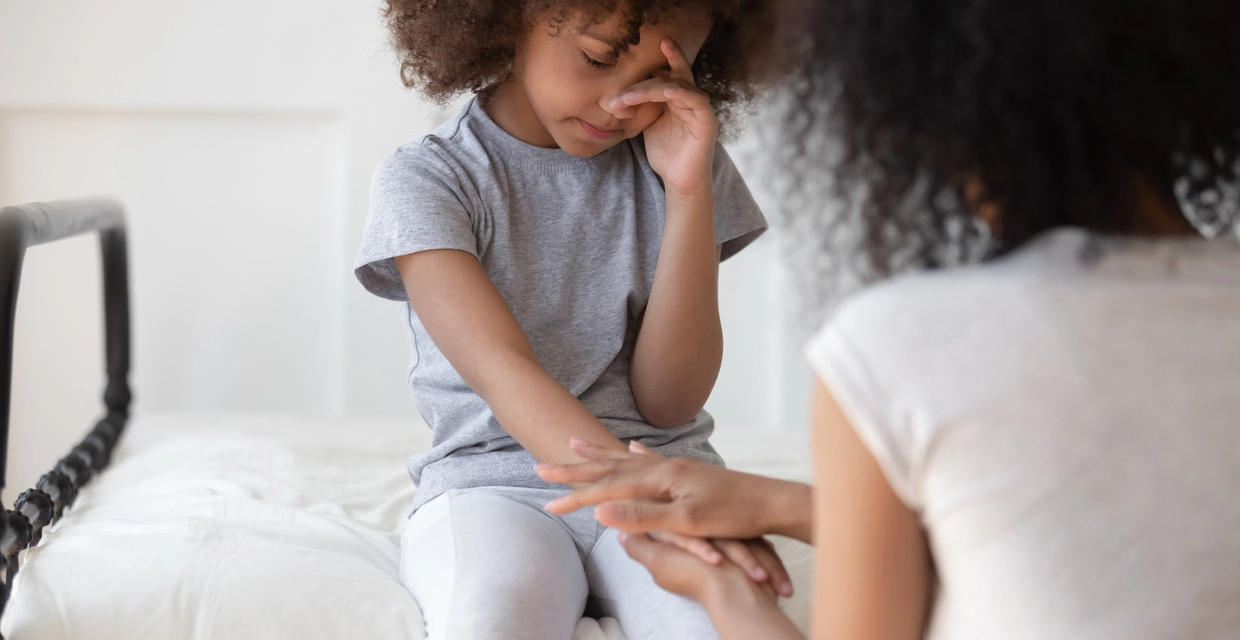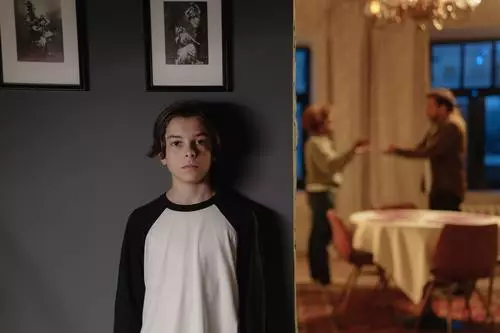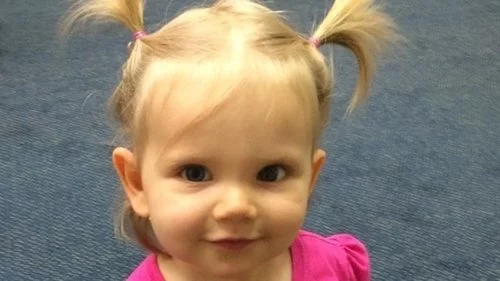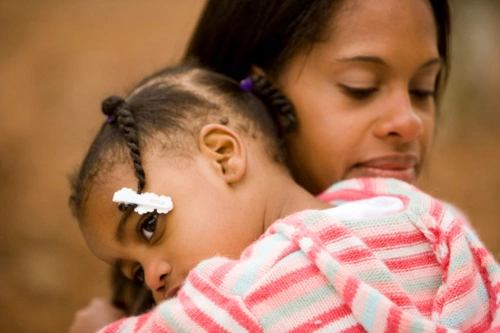1. Select a discrete app icon.

notes
California Courts Harm Kids By Ignoring the Science
In child custody cases, courts overwhelmingly side with manipulative, abusive fathers
- Mar 28, 2022

One lesson that thinking people learned from the pandemic is the importance of listening to the science. California leaders seem proud of their work to tame COVID by listening to the scientists. So why do they allow their courts to ignore important scientific research, particularly when children are paying an awful price?
Unfortunately, most people, including most court professionals, are unaware that custody courts are severely tilted in favor of abusive fathers and towards risking harm to children. Courts have been exceedingly slow in integrating important scientific research into their deliberations, and this mistake helps place children in physical jeopardy in cases involving domestic violence or child abuse.
The ACE (adverse childhood experiences) studies are peer-reviewed medical research from the Centers for Disease Control and Prevention. The ACE research found that children exposed to domestic violence or child abuse will live shorter lives and face a lifetime of health and social problems. Most of the harm is caused by the fear and stress that abusers create in their family homes. This goes to the essence of courts’ protecting the best interests of children and contested custody cases often offer the last chance to save children from these awful lifelong consequences.
The Saunders Study is peer-reviewed scientific research from the National Institute of Justice in the U.S. Justice Department. Saunders found that court professionals need more than generalized training in domestic violence. Judges, lawyers and especially evaluators need training in very specific subjects that include screening for domestic violence, risk assessment, post-separation violence and the impact of witnessing domestic violence on children. Most court professionals do not have this specific knowledge, and this leads them to instead focus on the myth that mothers frequently make false abuse reports and they fall prey to unscientific alienation theories.
As a result, unqualified professionals routinely make recommendations and decisions that harm children. Saunders found that abusive fathers use decision-making to block any decision the mother wants, and particularly to stop therapy, because the child might reveal the father’s abuse. Saunders also found that courts are not requiring supervised visitation for alleged abusers as often as needed.
Fundamentally, without ACE, courts minimize the harm from domestic violence and child abuse, and without Saunders, courts rely on the wrong professionals in abuse cases and therefore disbelieve true reports of abuse. Saunders recommends a multi-disciplinary approach that would include experts in domestic violence and child sexual abuse when these are important issues in the case. Many standard court approaches and assumptions are proven wrong by ACE and Saunders. The mistakes are not neutral in the sense that the practices are applied to both parents, yet all of the resulting errors favor abusive fathers and increase the risk to children.
The California legislature passed a resolution asking state agencies to use the ACE Research. They also passed a law saying that the health and safety of children should be the first priority in child custody cases. The word “health” is critical because ACE deals directly with the health of children, so any determination to keep children healthy requires courts to consider the ACE Research.
Piqui’s Resolution says that court professionals should be trauma-informed. Nevertheless, most courts in California continue to ignore ACE and Saunders research as they employ outdated and sometimes biased approaches that result in the parental murders of children, or in less healthy and successful lives because of lifetimes of abuse.
Reforms to Protect Children in Domestic Violence Custody Cases
California may be the state with the most legislative reforms thanks to dedicated activists working for decades to save protective parents and their children. The Center for Judicial Excellence (CJE) and the California Protective Parents Association (CPPA) have been particularly effective in coaxing needed reforms from the legislature there. Just last year, Senator Dave Min’s SB-654 clarified the safest procedure for children to address the court without parents present, while also requiring judges to state their reasons for giving abusers unprotected visits with children as they already do in permanent custody decisions. SB 594 requires evaluations to be complete and to follow the minimum standards laid out in state law, since so few custody evaluations comported with what the law required. This is in addition to the ACE Resolution, Piqui’s Resolution and the law that makes the health and safety the first priority in custody decisions.
CJE and CPPA also helped generate crucial audits of family courts in some of the worst California counties back in 2009, despite being met by initial opposition from the Judicial Council of California. The Marin and Sacramento Counties audit eventually found that family court mediators were never questioned about their training in domestic violence or child abuse before being hired, and the audit found that there was insufficient record-keeping on subsequent trainings that these front-line workers on domestic violence cases may or likely may not have received in child abuse or domestic violence. It was later discovered that the Marin Superior Court even went so far as to destroy boxes and boxes of sensitive case notes from mediators before allowing the State Auditor to conduct the audit, which makes one wonder what they were trying to hide exactly?
In 2016, advocates convinced legislators to order the first official audit of the state’s only judicial oversight agency, the Commission on Judicial Performance (CJP). Just six weeks after state legislators ordered the audit, the CJP sued the State Auditor in an aggressive attempt to block the first ever audit of their discipline records and procedures in more than sixty years. This costly move forced advocates to fight for two more years to convince legislators to slash the agency’s budget to pressure it to settle the lawsuit against the Auditor. Once the CJP audit was finally released in April of 2019, the reasons for the lawsuit to stop the audit became clear—the scathing report detailed an ineffective oversight agency that did not properly investigate serious judicial misconduct, including threatening to assault a litigant from the bench, and sleeping with clerks and litigants in judge’s chambers, among other egregious misconduct.
California child protection advocates have been advised by legislative allies to seek a series of gradual, piecemeal reforms instead of a comprehensive proposal like the Safe Child Act that would force fundamental change in longstanding court practices. Legislators and staffers have warned that laws that would effectively fix the problems in the court response to domestic violence custody cases would face too much opposition to pass. One key problem is that the California court establishment is extremely defensive and seeks to undermine any proposed reforms that aim to better protect children.
Catastrophic Cases Prove Comprehensive Legislation Needed
The Saunders Study recommends a multi-disciplinary approach that would include the use of domestic violence experts in domestic violence cases. One of the reasons that domestic violence experts understand abuse issues better than court professionals is that we are trained to look at patterns and context. In both cases discussed in this section, the courts missed the context, which is common in most domestic violence custody cases and would help courts understand cases better.
During a majority of relationships with abusive partners, the abuser, usually the father, will want or demand that the mother provide most of the childcare. In any other type of litigation, this would be understood as an admission that the mother is a good parent. When the mother leaves the abuser and reports his abuse, the father responds by claiming that the mother is unfit based on mental illness and alienation. What are the chances that a mother suddenly became unfit just because the relationship ended, and she reported his abuse? In the real world, the answer is close to zero, but courts using outdated practices frequently come to unlikely findings as they did in these cases.
The Meier Study from the National Institute of Justice found that when a court finds that the father is being alienated, it greatly improves his chances of winning custody, but if the mother is being alienated, the finding has no effect on the outcome. Most courts do not even consider the father’s alienating tactics. Calling the mother crazy, which is the standard response to reports of abuse, is alienating behavior when it is deliberately false. Mothers are repeatedly penalized for true reports of domestic violence, or substance abuse or mental illness in their spouses. The unscientific alienation theories that are relied on by the courts were created to help abusive fathers win custody and professionals earn large fees, so it is not surprising that it is applied in a gender-biased manner.
Another section of the Saunders study concerns what Saunders calls “harmful outcome” cases. These are extreme cases in which a safe, protective mother who is the primary attachment figure is limited to supervised or no visitation while the alleged abuser is given custody. Saunders found that these decisions are ALWAYS wrong and based on the use of flawed practices. The reason they are always wrong is that the harm from denying a child a normal relationship with their primary parent, a harm that includes increased risk of depression, low self-esteem and suicide, is greater than any benefit the court thought it was providing. In many of these cases, the flawed practices caused the court to create the opposite result of what would be best for the child. Both California cases I will be discussing are considered harmful outcome cases.
The court used the typical high conflict approach in both cases. This assumes that both parents are angry at each other and acting out in ways that are harmful to the child. The court immediately focuses on promoting cooperation and supporting a co-parenting relationship. The problem is that the research demonstrates that 75-90% of contested custody cases are really domestic violence cases. These are mostly fathers who believe that their wives or girlfriends had no right to leave and they use custody courts to regain what they believe is their entitlement to control their partner and make all of the decisions. They are often willing to hurt the child in order to hurt the mother, which makes these cases especially dangerous. The court’s high conflict approach penalizes mothers who seek to protect their children from abusers that they have experienced as frightening. The courts start promoting co-parenting without an opportunity to determine the history of abuse in the case. Victims are often punished for being “uncooperative.” The Saunders study found that shared parenting is inappropriate in domestic violence cases.
In a case I worked on in San Diego County, the father used a common abuser tactic of deliberately doing something to upset his victim, and then taping her response. This provides evidence that is decontextualized. The father then used this tape to obtain a restraining order against her to gain an unfair advantage in the case. I twice testified as an expert in hearings for the mother’s restraining order that she ultimately won. The courts created a false equivalency because both parents were issued restraining orders and the courts never considered who the primary aggressor was, as police are trained to do. The fact that both parents received restraining orders should demonstrate that this was not a co-parenting case, but the courts just treated this as a case requiring more high-paid professionals to promote co-parenting. None of the professionals had the training in domestic violence that Saunders found is needed to properly adjudicate these cases.
As the case dragged on, the mother ran out of money and had to represent herself. The series of attorneys she had hired did not understand domestic violence issues and were more concerned with pleasing the judge than with protecting the little girl. The father continued to use exchanges and decision-making to harass the mother and prevent therapy. The mediator agreed to speak with me, but never did. Instead, the mediator was only interested in a 50-50 co-parenting arrangement and viewed the father’s abuse as an obstacle to an agreement, rather than proof that this was not a case for co-parenting. When the mother sought sole custody, as the research recommends in a case like this, the mediator recommended sole custody to the abusive father and supervised visits for the mother.
Finally, after about 18 months, a trial was scheduled. There was a new judge, so I was anxious to educate the court about the ACE and Saunders research. The California legislature had passed a resolution asking state agencies to use ACE when making decisions and had said that the health and safety of the child should be the first priority. Health can best be determined by considering ACE, which is why this language was used. This would be my first chance to apply the research to the case and explain the factors that convinced me that the father was the primary aggressor.
The father was bigger and stronger, and the mother was clearly afraid of him. I had noticed that in the earlier Zoom hearings, the mother was clearly intimidated by the father’s aggressive approach when cross-examining me. Her voice became lower, she hesitated, and she was afraid to ask me the questions that we had agreed upon beforehand. I listened to tapes in which the father claimed the mother was not taking proper care of the child. The father continued to yell at the mother while the girl was upset and crying. He was clearly more concerned with making a record for litigation than comforting or helping his daughter. I saw letters from friends and family who the mother told about the father’s abuse well before any litigation was on the horizon. The mother had expressed fear that the father would hurt her. One of the friends had witnessed the father’s abuse. The mother also received assistance from domestic violence agencies, which means that she was screened and the experts in the community had confirmed that she was a domestic violence victim. This was in addition to the continued litigation and economic abuse by the father and his implied admission that she was a good mother by relying on her for most of the childcare.
We had been warned that the judge usually just follows the mediator’s recommendations. The court refused to hear my testimony, so no court professionals ever heard the overwhelming proof of the father’s abuse. Instead, they followed the mediator’s recommendation to create a harmful outcome case. The mother tried to ask the court to reconsider and cited the Saunders’ findings that the outcome was always wrong, but the court was never open to consider its mistake. The mother had to waste very limited financial resources for unnecessary supervision of her visits with her child, and the child was denied a normal relationship with her primary attachment figure. The father took full advantage by blocking some of the visits and harassing his victim. Normal visitation was finally resumed after a psychologist confirmed that the mother had no mental health issues that undermined her parenting. Still, she was forced to continue to co-parent with the abuser, who successfully used the courts to regain control over his victim.
In the Orange County case, the evaluator could not determine if there was domestic violence and so continued on to other less important issues that she was more comfortable with. Evidently, a statement by the couple’s counselor that the father admitted that he had pushed the mother and agreed to attend an anger management program was not enough proof. The father never went for anger management, but he would not have promised to go without substantial incidents of domestic violence. The judge heard testimony from the father that he watched the mother and her future husband talking in the car (the father said he thought they were having sex), at a time after the parents had separated. The father slammed his fist on the hood of the car and physically escorted the mother into the house without her permission. In other words, the father was monitoring the mother; believed that he was entitled to stop her relationships with other men because she had no right to leave him, and that he was entitled to escort her into the house. None of this resulted in physical injuries to the mother, so the judge remained oblivious that his behavior further proved the father’s abuse.
During this case, the mother raised concerns about possible child sexual abuse. The evidence suggested that either there was sexual abuse or more likely, that there had been a boundary violation that made the child uncomfortable. While they were investigating, the mother ran away with the child, but did not leave the state, and allowed the father to have Zoom visits. The mother’s unilateral actions to protect her child left the judge angry at her and probably contributed to the harmful outcome.
Donate and change a life
Your support gives hope and help to victims of domestic violence every day.
Conclusion
The Saunders study included a section about harmful outcome cases because they cause such severe harm to children. In both cases, we sought to make the court aware that the research had concluded that their decision is always wrong. They were more concerned with preventing a record of their mistakes than preventing harm to the children.
No judge wants to hurt children, but most of the court system in California is not acting in good faith. The system works well for court professionals, and they are using practices to save time. The problem is that these practices are not appropriate for abuse cases because they don’t save children.
The people who have worked for years to try to reform the custody court response to domestic violence and child abuse are truly angels on earth. They have seen so many heartbreaking cases and premature deaths because family courts consistently fail to use the relevant research or the right experts. My colleagues have helped pass a series of reforms designed to help the courts better protect children.
In every case, the response from the court system has been defensive and uncooperative. They sought to ignore or defeat laws that would provide a measure of accountability for officials acting unethically. They have used their discretion to defeat the purpose of the reforms that were passed. This is why California needs comprehensive legislation to force family courts to abandon biased and discredited practices that benefit lawyers, mental health professionals and abusers, but not children.
The Safe Child Act is a comprehensive proposal that will force courts to use best practices and abandon outdated approaches that have proven to be dangerous. Here are the main provisions:
- The health and safety of children must be the first priority in all custody and visitation decisions. Courts cannot understand the health risks in abuse cases without ACE. No other issue is as important as the health and safety of children.
- Courts must consider important scientific research like ACE and Saunders. Without ACE, courts minimize the harm from DV and child abuse, and without Saunders, they rely on the wrong experts and disbelieve true reports of abuse. Many standard court practices are proven wrong by ACE and Saunders, and all of the mistakes favor abusers and harm children.
- Courts must use a multi-disciplinary approach: This is recommended in the Saunders study. Mental health professionals are experts in psychology and mental illness but not in DV and child abuse. The evaluator and the mediator were the influential professionals in the two cases discussed, and neither had the expertise to recognize abuse, nor did they have the humility to consult someone who did.
- There should be an early hearing in abuse cases that is solely limited to addressing the abuse issues. The evidence would be limited to abuse issues so that abusers cannot distract attention with less important issues. If one of the parents is an abuser, then we know the outcome that works best for the children- full custody for the safe parent and initially supervised visits for the abuser. Cases that now take many months or years would be resolved in a few hours, and money that would have gone to the professionals can be spent on the children’s needs. Best of all, the court is more likely to get the decision right and keep the kids safe.
- Encourage family courts to level the playing field and require abusers to pay for the costs that their abuse makes necessary. The mother in the first case, like many victims, lost her legal representation as the father’s litigation abuse bankrupted her. This often results in family courts being denied all of the evidence they need to make a good decision. Domestic violence is about control, including financial control. Courts need to prevent economic abuse from being the determining factor in the well-being of children.
- Training and retraining for court professionals. Judges and other professionals need to learn about the evidence-based research and learn how to better recognize abuse. They also need to learn to stop using old practices that harm children. They need to learn about the topics recommended by the Saunders study and consider what specific expertise is needed in a particular case.
- Provide additional funding to DV agencies. We need knowledgeable and seasoned advocates to help train judges and other professionals. This is based on a multi-disciplinary approach. Some advocates should be trained to be expert witnesses to help courts recognize domestic violence. DV agencies are already underfunded, so California should provide more funding when we ask for additional services.
The California Legislature has responded for many years to complaints, research and unbearable tragedies caused by the outdated practices that courts use to respond to child custody cases involving reports of abuse. They have sought to create reforms that would help the courts recognize true reports of abuse and avoid practices that place children in jeopardy. The courts have tolerated widespread gender bias and a false equivalency between abusers and safe, primary parents. Unfortunately, the insular atmosphere in the courts, along with a tendency to listen to the same small group of professionals without the multi-disciplinary expertise the research recommends, has led courts to respond to legislative reforms with defensiveness and outright opposition. And children continue to be murdered and even more continue to suffer in the violent homes of their abusive parents.
How can a progressive state that claims to listen to scientists and place great value in protecting children and abused women continue to tolerate a broken system that the research says is tilted in favor of abusers? It is time for the California Legislature to make sure that the needed reforms that they have sought to create will finally be implemented to save children’s lives. Children who are crying themselves to sleep at night want to know if the California promise is real.
This article is part of #YourVoice, an ongoing column published on this website by individual contributors in their own personal capacity and that involves the opinions, recollections and/or information provided by such contributors, and which does not necessarily reflect the official policy or position of this website







